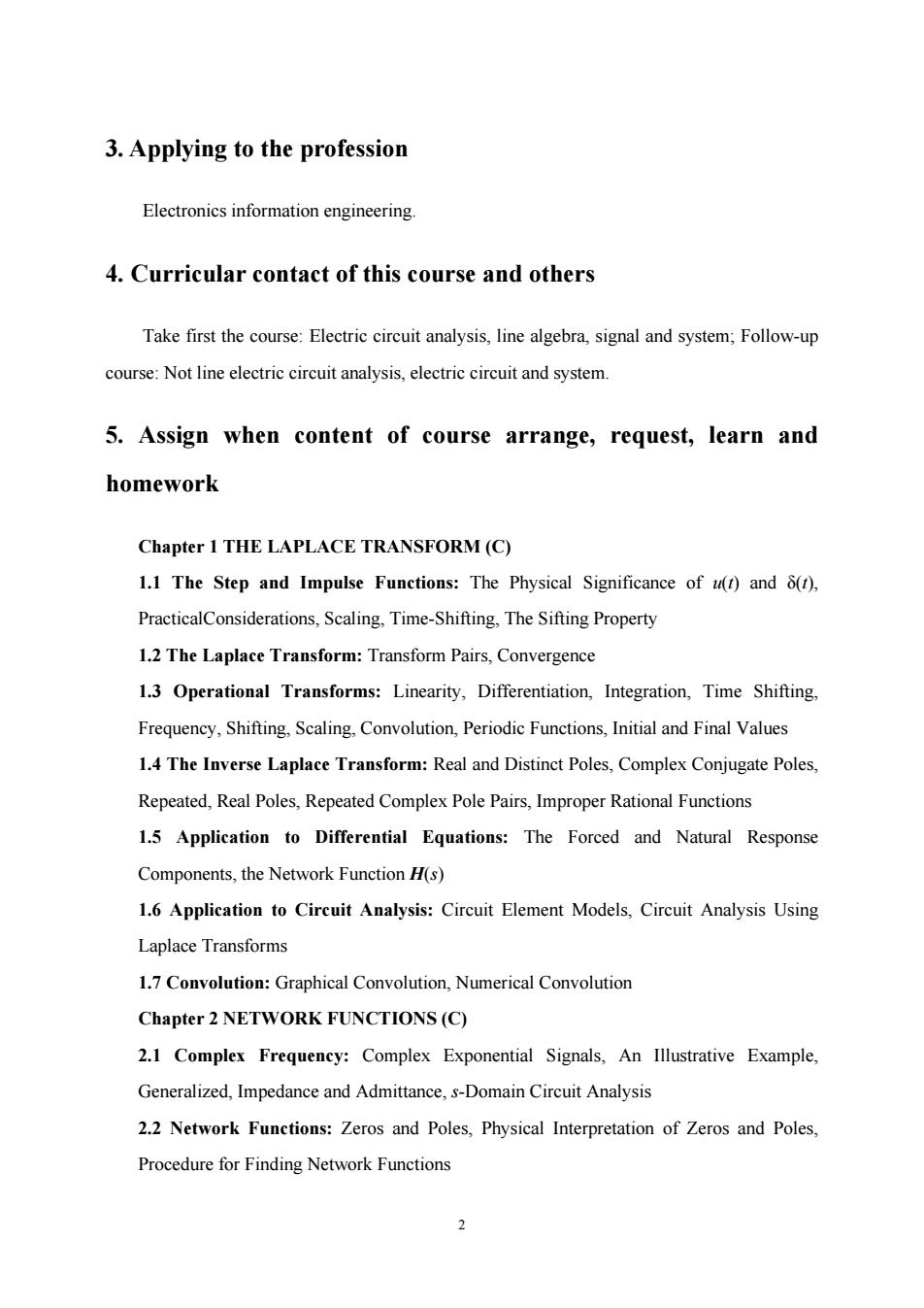正在加载图片...

3.Applying to the profession Electronics information engineering. 4.Curricular contact of this course and others Take first the course:Electric circuit analysis,line algebra,signal and system:Follow-up course:Not line electric circuit analysis,electric circuit and system. 5.Assign when content of course arrange,request,learn and homework Chapter 1 THE LAPLACE TRANSFORM(C) 1.1 The Step and Impulse Functions:The Physical Significance of and () PracticalConsiderations,Scaling.Time-Shifting,The Sifting Property 1.2 The Laplace Transform:Transform Pairs,Convergence 1.3 Operational Transforms:Linearity,Differentiation,Integration,Time Shifting Frequency,Shifting,Scaling,Convolution,Periodic Functions,Initial and Final Values 1.4 The Inverse Laplace Transform:Real and Distinct Poles,Complex Conjugate Poles, Repeated,Real Poles,Repeated Complex Pole Pairs,Improper Rational Functions 1.5 Application to Differential Equations:The Forced and Natural Response Components,the Network Function H(s) 1.6 Application to Cireuit Analysis:Circuit Element Models,Circuit Analysis Using Laplace Transforms 1.7 Convolution:Graphical Convolution,Numerical Convolution Chapter 2 NETWORK FUNCTIONS(C) 2.1 Complex Frequency:Complex Exponential Signals,An Illustrative Example. Generalized,Impedance and Admittance.s-Domain Circuit Analysis 2.2 Network Functions:Zeros and Poles,Physical Interpretation of Zeros and Poles, Procedure for Finding Network Functions 23. Applying to the profession Electronics information engineering. 4. Curricular contact of this course and others Take first the course: Electric circuit analysis, line algebra, signal and system; Follow-up course: Not line electric circuit analysis, electric circuit and system. 5. Assign when content of course arrange, request, learn and homework Chapter 1 THE LAPLACE TRANSFORM (C) 1.1 The Step and Impulse Functions: The Physical Significance of u(t) and δ(t), PracticalConsiderations, Scaling, Time-Shifting, The Sifting Property 1.2 The Laplace Transform: Transform Pairs, Convergence 1.3 Operational Transforms: Linearity, Differentiation, Integration, Time Shifting, Frequency, Shifting, Scaling, Convolution, Periodic Functions, Initial and Final Values 1.4 The Inverse Laplace Transform: Real and Distinct Poles, Complex Conjugate Poles, Repeated, Real Poles, Repeated Complex Pole Pairs, Improper Rational Functions 1.5 Application to Differential Equations: The Forced and Natural Response Components, the Network Function H(s) 1.6 Application to Circuit Analysis: Circuit Element Models, Circuit Analysis Using Laplace Transforms 1.7 Convolution: Graphical Convolution, Numerical Convolution Chapter 2 NETWORK FUNCTIONS (C) 2.1 Complex Frequency: Complex Exponential Signals, An Illustrative Example, Generalized, Impedance and Admittance, s-Domain Circuit Analysis 2.2 Network Functions: Zeros and Poles, Physical Interpretation of Zeros and Poles, Procedure for Finding Network Functions 2